Written by Matt Powers —
It’s Actually Not Hard to Garden in the Foothills
I’ve heard it all, and I have a large garden in Coarsegold with no fences, poisons, or chemical fertilizers. It took years of trial and error, research, and education in permaculture to understand the complexity of our region though, on that journey, I found easy ways to grow food in our region. I’m currently writing a high school textbook on applying permaculture (permanent+culture) to every aspect of life.
The regenerative, sustainable, and ethical means to provide for our families is already here waiting for us. Nature is the future of the jobs market, technology, society, and more. Using the patterns of nature we can provide for both people, the ecology, and ourselves ethically, still, most folks don’t have the information to do this — because it is not taught in schools, yet.
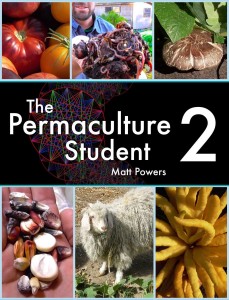 That’s about to change: recently, the first high school permaculture textbook was successfully funded on Kickstarter.
That’s about to change: recently, the first high school permaculture textbook was successfully funded on Kickstarter.
To illustrate what permaculture is and can do for us locally, I have a few insights to share about our local bioregion.
Squash, Corn, & Cowpeas are Staple Foods in the Foothills
Often, there are a few misconceptions about squash. Winter squash are really the only squash. Pumpkins are squash, and summer squash are merely immature squash as well. The leaves, vines, flowers, and fruits of the squash plant are edible, and mature winter squash can last over a year outside in the shade in our area using varieties like Blue Hubbard, Black Futsu, Spaghetti Squash, and almost every “long keeper” variety. These vigorous vines can hide their bounty from both us and the critters.
Keeping squash (and melons) on a pedestal or on a bed of straw can keep them from attracting critters before you can harvest them. I have grown hundreds of pounds of squash the past two years, fed my excess to a pig that we later harvested one year, and canned then froze the abundance each year. The seeds from seed-saving that many squash, alone, has been an amazing bounty, and it was easy.
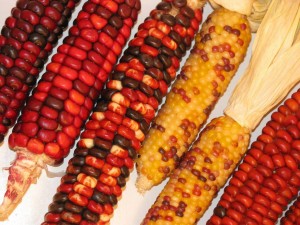 Anyone can grow squash in our area and still lose some to the animals. The key is the setup of the system — make your gardens as sprawling as possible and as diverse as possible.
Anyone can grow squash in our area and still lose some to the animals. The key is the setup of the system — make your gardens as sprawling as possible and as diverse as possible.
Soil development is also key. We have incredibly mineral-rich decomposed granite, but we need organic matter in it to build up our topsoil and release all those minerals with soil life (since soil life created all the soils we currently enjoy, not Home Depot).
Pairing squash with cowpeas, corn, and bait crops can be a superb polyculture for growing in our area without working hard for a high yield. The cowpeas create more biomass and fix more nitrogen than any other annual on the planet — growing alone can be a big step towards creating better soils.
All three crops are staples here in the foothills of the Sierra, can be thrown sown, and work together extremely well: corn like painted mountain, cowpeas like iron and clay, and squash like black futsu or galeux d’eysines. Covering with a light amount of straw can keep the birds at bay (as can reflective mylar strips on tree branches & fencing). Watering with an overhead sprinkler on a timer can make for the easiest garden experience possible.
The Expensive Grains at Found at Whole Foods Grow like Weeds in the Foothills
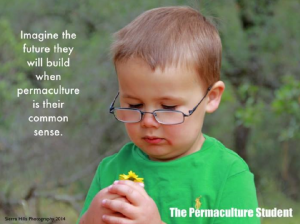 Speaking of bait crops, lining our systems with gourmet grains from the shelves of Whole Foods can provide a living fence to keep wildlife fed and out of our systems, as well as provide us with seed, feed, and food throughout the season. Sound too good to be true?
Speaking of bait crops, lining our systems with gourmet grains from the shelves of Whole Foods can provide a living fence to keep wildlife fed and out of our systems, as well as provide us with seed, feed, and food throughout the season. Sound too good to be true?
I am pleased to introduce you to amaranth. Related to pig weed, this vigorous annual grows from a seed the size of the biblical mustard seed to 9 to 14-feet tall (sometimes taller in my system). Deer do graze on them, but it’s so vigorous that it hardly seems to bother the plant. I plant Orange Giant Amaranth from RareSeeds.com along the edges of all my systems with huauzontle (Aztec Spinach), which is a cross between quinoa and lamb’s quarters.
Just like lamb’s quarters, huauzontle is ignored by local herbivores yet lacks the saponins folks dislike in quinoa; it grows into a spinach covered candy-pink-and-green Christmas tree shape. Quinoa and millet grow here, as well as our wildflowers do, and are at a premium cost at Costco, Whole Foods, and Lassen’s.
I was able to save gallons of amaranth seed last year from half a seed pack I started with two seasons ago. I saved over two gallons of aztec spinach seed from one 50-foot row: there’s a reason all our diets were based on grains! I encourage everyone to grow these drought-tolerant, vigorous, gourmet grains!
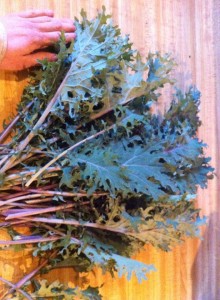 With corn, millet, quinoa, amaranth, and huauzontle (the original tortilla grain), we have a broad selection of grains beyond just wheat (which can be difficult to clean and harvest). If anything, it’s a living food storage that is ready at all times to provide for you and the family. They all can double as chicken and animal feed as well.
With corn, millet, quinoa, amaranth, and huauzontle (the original tortilla grain), we have a broad selection of grains beyond just wheat (which can be difficult to clean and harvest). If anything, it’s a living food storage that is ready at all times to provide for you and the family. They all can double as chicken and animal feed as well.
Tender Kale Does Exist and It Grows Year-round in the Foothills
You know that phrase, “just because it’s on television…” doesn’t mean you should necessarily believe it? Well, the same thing can be said of the grocery store. The fibrous kale offered there ships well and looks “fresh” for a very long time, which makes for extended chewing and an abnormal fear of greens.
Ragged Jack or Red Russian kale is tender and grows year-round here. If it starts to bolt, you can cut it to a stump an inch high & it will regrow as a bush of micro-greens for easy harvesting. This is also a seed you can throw sow. It will reseed itself if you allow it which leads to a perpetual section of greens that require very little management. Right now I’m expecting cups of seed this year. Within a few years, we all could have the same bounty.
Swiss chard grows in much the same way here (though it gathers salt in a unique way). If you have several strong plants of swiss chard and kale in your garden, you won’t have to buy greens ever again. Add in a milking goat and a few laying hens, and you have a perpetual breakfast option. The extra greens can even supplement the bird and goat feed.
We all need Grazers
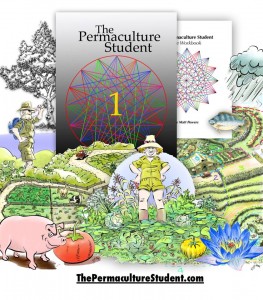 We can build the soil with compost tea, manure, mulch, and forking it, but that is a lot of energy to expend. Sheep and cattle do it with much more grace and efficiency. Plus, their end product (or end’s product, to be exact) is a much more refined product. Their manures are what created soils initially – the world’s grasslands were covered with tightly packed herds harried by large predators.
We can build the soil with compost tea, manure, mulch, and forking it, but that is a lot of energy to expend. Sheep and cattle do it with much more grace and efficiency. Plus, their end product (or end’s product, to be exact) is a much more refined product. Their manures are what created soils initially – the world’s grasslands were covered with tightly packed herds harried by large predators.
The carbon that everyone keeps talking about in the atmosphere can all be taken back into the soils (the other half is in the ocean, but there’s ways to fix that too). We do have to stop using fossil fuels, but the world is not over as we know it. If we switch our agricultural land over into carbon farming using permaculture and holistic management, we will have atmospheric carbon levels to pre-industrial age levels – a full reversal. We have to stop tilling, stop spraying, and stop using chemical fertilizers (they are salts that destroy the soils for quick gains).
Using animals and their waste, we can rebuild the soils quickly. Though lambasted in the media, cows and herbivores in general are critical keystone species to all the ecologies where they are found in nature. To that end, we should never have removed grazing from the national forest and, if anything, we should have bigger herds in smaller paddocks, shifting daily – that is proven to rebuild soils, improve hydrology, and increase the vitality of the entire ecosystem.
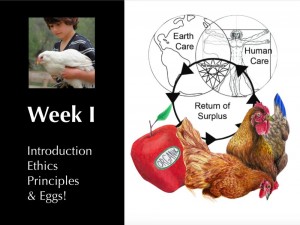 In fact, we need to have those herds move through everyone’s properties to do the brush clearing for us. First we lead with browsers like goats to clear the branches and thin it back, and then we follow with grazers. The possibility of an explosion in both local meats and fire control is win/win.
In fact, we need to have those herds move through everyone’s properties to do the brush clearing for us. First we lead with browsers like goats to clear the branches and thin it back, and then we follow with grazers. The possibility of an explosion in both local meats and fire control is win/win.
Plus, what are you going to eat with your corn, squash, beans, and greens?
Start on your Permaculture Journey
Start working with nature! It’s the most powerful force on earth. You can get a FREE introduction to Permaculture by clicking here – Week 1 of my online course, The Permaculture Student Online.
Click here to support our Kickstarter for the first high school permaculture textbook EVER.
Our homestead on ValleyPBS
Episode 1: http://video.valleypbs.org/video/2365449822/
Episode 2: http://video.valleypbs.org/video/2365543761/

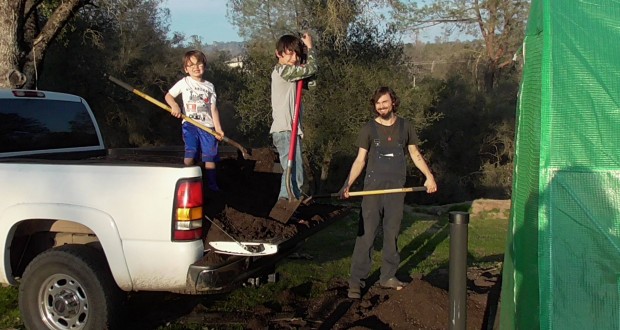



I live in Oakhurst and I’m quite excited by the possibilities of permaculture. The idea that we should work with nature rather then conquer her (with pesticides and energy intensive farming) is long over due. Hopefully more people explore what’s possible.